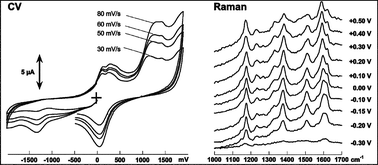Size and ligand effects on the electrochemical and spectroelectrochemical responses of CdSe nanocrystals
Abstract
The electrochemical properties of CdSe

* Corresponding authors
a
DRFMC, UMR 5819 SPrAM (CEA–CNRS–Université J. Fourier Grenoble I), Laboratoire Electronique Moléculaire, Organique et Hybride, CEA Grenoble, 17 rue des Martyrs, Grenoble Cedex 9, France
E-mail:
pron@cea.fr, preiss@cea.fr
Fax: +33 438 78 51 13
b Faculty of Chemistry, Warsaw University of Technology, Noakowskiego 3, Warszawa, Poland
The electrochemical properties of CdSe

 Please wait while we load your content...
Something went wrong. Try again?
Please wait while we load your content...
Something went wrong. Try again?
C. Querner, P. Reiss, S. Sadki, M. Zagorska and A. Pron, Phys. Chem. Chem. Phys., 2005, 7, 3204 DOI: 10.1039/B508268B
To request permission to reproduce material from this article, please go to the Copyright Clearance Center request page.
If you are an author contributing to an RSC publication, you do not need to request permission provided correct acknowledgement is given.
If you are the author of this article, you do not need to request permission to reproduce figures and diagrams provided correct acknowledgement is given. If you want to reproduce the whole article in a third-party publication (excluding your thesis/dissertation for which permission is not required) please go to the Copyright Clearance Center request page.
Read more about how to correctly acknowledge RSC content.
 Fetching data from CrossRef.
Fetching data from CrossRef.
This may take some time to load.
Loading related content
